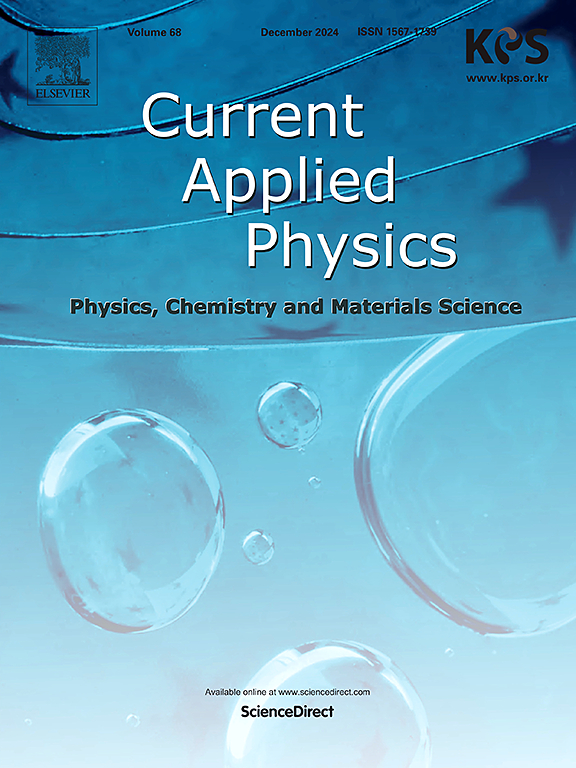Magnetic-field-tuned superconductor-to-insulator transition via mosaic phase in cuprate thin films
IF 2.4
4区 物理与天体物理
Q3 MATERIALS SCIENCE, MULTIDISCIPLINARY
引用次数: 0
Abstract
The magnetic-field-induced superconductor-to-insulator transition (SIT) was investigated in highly disordered La1.85Sr0.15CuO4 thin films. By systematically reducing the film thickness, disorder effects were enhanced, leading to the coexistence of superconducting and insulating phases at low temperatures. Electronic transport measurements revealed the formation of an intermediate mosaic phase, where localized Cooper pairs coexist with a coherent superconducting state. Near the quantum phase transition, scaling analysis determined a critical resistance Rc = 5.72 kΩ, consistent with the universal quantum resistance RQ = h/4e2 for Cooper pairs. The critical product of the spatial and dynamic critical exponents aligns with the classical percolation universality class, emphasizing the role of percolation in governing the SIT under strong disorder. These results provide new insights into the quantum critical behavior and phase evolution of disordered superconducting systems.

铜薄膜中通过镶嵌相实现的磁场调谐超导体到绝缘体的转变
研究了高度无序La1.85Sr0.15CuO4薄膜中磁场诱导的超导体到绝缘体的转变(SIT)。通过系统地减小薄膜厚度,增强了无序效应,导致超导相和绝缘相在低温下共存。电子输运测量揭示了中间镶嵌相的形成,其中局域库珀对与相干超导态共存。在量子相变附近,标度分析确定了临界电阻Rc = 5.72 kΩ,与Cooper对的通用量子电阻RQ = h/4e2一致。空间和动态临界指数的临界积zν=1.33符合经典渗流普适类,强调了渗流在强失序条件下对SIT的调控作用。这些结果为无序超导系统的量子临界行为和相演化提供了新的见解。
本文章由计算机程序翻译,如有差异,请以英文原文为准。
求助全文
约1分钟内获得全文
求助全文
来源期刊

Current Applied Physics
物理-材料科学:综合
CiteScore
4.80
自引率
0.00%
发文量
213
审稿时长
33 days
期刊介绍:
Current Applied Physics (Curr. Appl. Phys.) is a monthly published international journal covering all the fields of applied science investigating the physics of the advanced materials for future applications.
Other areas covered: Experimental and theoretical aspects of advanced materials and devices dealing with synthesis or structural chemistry, physical and electronic properties, photonics, engineering applications, and uniquely pertinent measurement or analytical techniques.
Current Applied Physics, published since 2001, covers physics, chemistry and materials science, including bio-materials, with their engineering aspects. It is a truly interdisciplinary journal opening a forum for scientists of all related fields, a unique point of the journal discriminating it from other worldwide and/or Pacific Rim applied physics journals.
Regular research papers, letters and review articles with contents meeting the scope of the journal will be considered for publication after peer review.
The Journal is owned by the Korean Physical Society.
 求助内容:
求助内容: 应助结果提醒方式:
应助结果提醒方式:


